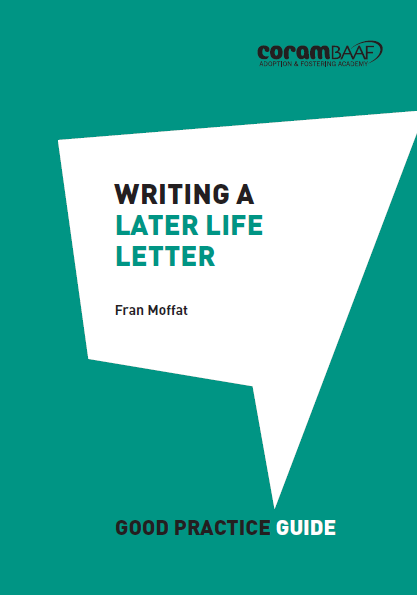
Writing a later life letter
£10.95
A later life letter is one written by a social worker to a child who is being adopted, to help the child make sense of their past, but it is intended to be read later in the child’s life. This is a difficult and delicate task. How do you write to a young person who may not remember you? How do you explain painful events in the young person’s childhood? What is the role of the adoptive parents in the writing and use of the letter?
This good practice guide focuses on the practicalities of writing a later life letter, including how to address and explain a range of complex or difficult subjects. It includes examples of text from later life letters to illustrate and clarify the guide's practical advice, and a range of helpful appendices and supplements are also provided.
This guide is for all practitioners and managers involved in writing later life letters, or in ensuring that agency policy and practice properly support and enable their writing and use.
Read the contents page and introduction
AVAILABLE IN EBOOK AND HARD COPY
Questions about eBooks? Check out our FAQs
HARD COPY
Reviews
The book is detailed and it covers a great deal of information which I found relevant and important. I would recommend this book to all social workers, adoption social workers and any other professional, adoptive and foster carers who are involved in conveying information in the form of the later life letter (to the child/young person) to make sense of their past in a measured, sensitive and considered manner.
Dr Rukhsana Farooqi, Independent Social Work Consultant, Director of Empowering Black Children and Families Ltd
